Within the wonderers of the world there are hundreds of designers who feel very attracted to Islamic art, the same that manages to generate emotions of tranquillity, peace and at the same time with a touch of elegance in its geometric decorations.
One of the main places that house this type of art is Alhambra in the city of Granada in Spain, where we can see a lot of murals, gardens, fortresses decorated with this ancient Islamic art.
Let's take a moment to learn, investigate and communicate details related to this type of art, together with its history, types of Islamic art, current use and of course representations of this trend of the world of interior decoration.
So, if you're curious about these perfectionist tendencies, here is Alhambra as a representation of an Islamic geometric pattern in art.
Alhambra is a royal residence and court belonging to the Spanish municipality of Granada in the community of Andalusia, where one can see many buildings of antiquity. Where the members of the Nasrid court, as well as the monarchs of that time, took refuge and were very welcomed.
Speaking of the history of the Alhambra, we move back into a time near the year 666 AD. The first community writings are detailing, it was built with a unique intention of defence and safe accommodation for people of great importance. Constructed on the remains of Roman fortifications on the hill, this military zone became a palace and fortress complex of distinct reddish colour.
After the Zirid dynasty was positioned in the city, the constructions were extended. Even in this era all construction and art of these dynasties can be easily recognized. The dynasty was well established in all surrounding cities of the provinces of al-Andalussuch such as Malaga.
Alhambra was in constant changes and its structure as well as its decorations were and are objects of admiration for many people. Then in the year 1238, the most important modifications were made and also of greater luxury. With the arrival to power of the Muhammad Ibn Nasr, founder of the Nasrid Dynasty, which among many other modifications implemented a system of water subsidy for the city of Alhambra, such conditions are maintained until today.
After the Spanish Monarchs conquered the city of Granada in 1492 it became a Christian court. In 1527 the construction of the Castle of the Holy Roman Emperor Charles V begun.
Unfortunately over subsequent centuries the Moorish art fell into ruin. It was long neglected and subject to vandalism, moreover successive rulers and their irresponsible attempts to renovate it contributed to the fact that it was further damaged. The first successful attempts to restore it to the former glory took place in a year 1828.
Art is very important in this time, also for the Islamic tendency of the area. The techniques developed mainly during the Nasrid dynasty and one of the most used mosaic tilework is Zellige.
Zellige is colourful individually chiselled tiles, assembled in a geometrical structure to form the mosaic. A lot of perfectionist techniques are shown to polish stone and apply a special enamel that is widely used in many luxury homes around the world.
This trend also leads to an exotic incorporation of mathematical patterns that produce a certain pleasure for those lovers of order and compulsion.
The application of zelliges is mainly to cover walls and floors with patterns that are exceptionally attractive for the designs of mosaic, composition and colours. The most common forms are a star, a square, a cross, an octagon combined with a cabochon etc. See below the palette of zelliges most used in the city of Alhambra.
White colour: used for backgrounds and some patterns of floors, tables and walls. It is made by mixing mud pieces with a special mixture of tin and lead, silica sand is also added, to achieve a purer white tin is used more than lead.
Blue: used for the so-called tiles, they are made with mixtures of enamel powder brought from other countries, the intention is to make the zellige look bright, for this a cobalt arsenide casting is used.
Brown: this colour is obtained through the mixture with local minerals, such as manganese or oligisto, depending on the presence of these minerals in the mixture can have darker shades until they reach black.
Yellow: This colour is achieved with the presence of ferrous minerals such as limonite or stibnite.
The colour palette of zelliges is very wide today, due to the fact that there are hundreds of different shades and all can be achieved through mixtures with powder colours.
Mosaics, are generally the most used techniques in Islamic art, where their figures with ornaments and precision in their placement beautifully decorates any space that can be fully appreciated. As mentioned above, these mosaics are embedded in the walls, floors of almost the entire Alhambra community.
The relief is another technique that is used in Islamic art, precisely in the areas of Andalusia, where its application allows to direct the view to a three-dimensional space where depth is an important characteristic of these artistic creations.
The carving of the relief in the mosaics and tiles also allowed adding more perfectionism to the masterpieces. This was done by hands with precision and a lot of accuracies.
The main intention of this Islamic artistic trend is to avoid creating a figure to the perception of human sight, since the whole composition is approached by repetitive patterns in which the flow of attention is dispersed in following these patterns.
The most commonly used figures are the squares and the circles that represent, according to the psychology of the forms, cyclic cognitive transitions that produce a sense of unity and pragmatism of form.
Another important point of the absence of the figures within the Islamic patterns is because of avoiding the adoration of any style and in this way respecting a single god and entity of worship, the artists of the time had and keep this in mind so that an excellent composition of patterns without notable figures is maintained.
Declared a UNESCO World Heritage Site in 1984, Alhambra is a testament to Moorish culture and the most significant surviving remnant of the period of Islamic rule in the Iberian Peninsula. It integrates the skills of Muslim, Jewish, and finally Christian craftsmen and artisans of their era.
References
Photos: @highonthehog
Images: sources linked below
Irwin, R., The Alhambra. Cambridge, MA: Harvard University Press, 2004
Jones, O.; Bedford, F., Moresque Ornament from the Alhambra, The Grammar of Ornament, Day & Son, pp. 127–143, 1856
Roxburgh, D. J., (ed.). Envisioning Islamic Art and Architecture. Essays in Honor of Renata Holod, Leiden & Boston: Brill, 2014
Al-Andalus : the art of Islamic Spain / edited by Jerrilynn D. Dodds http://libmma.contentdm.oclc.org/cdm/compoundobject/collection/p15324coll10/id/45966/rec/1
https://whc.unesco.org/en/list/314

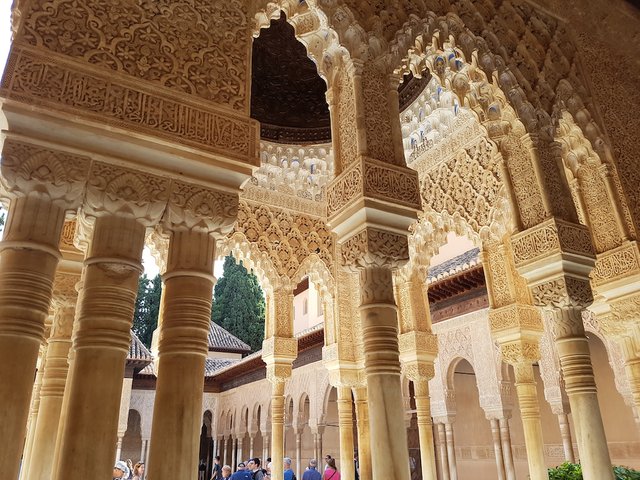
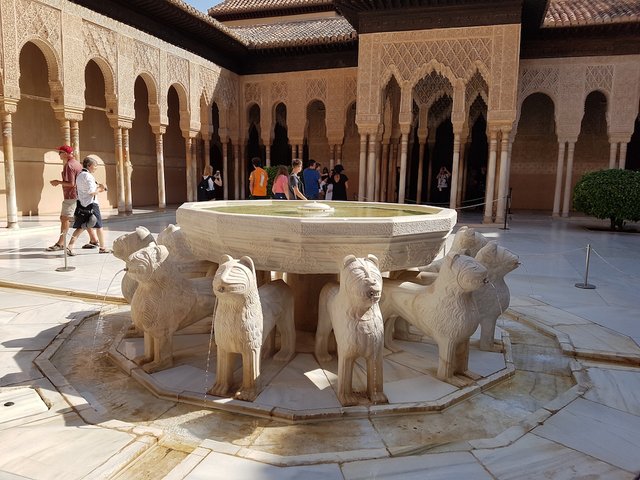



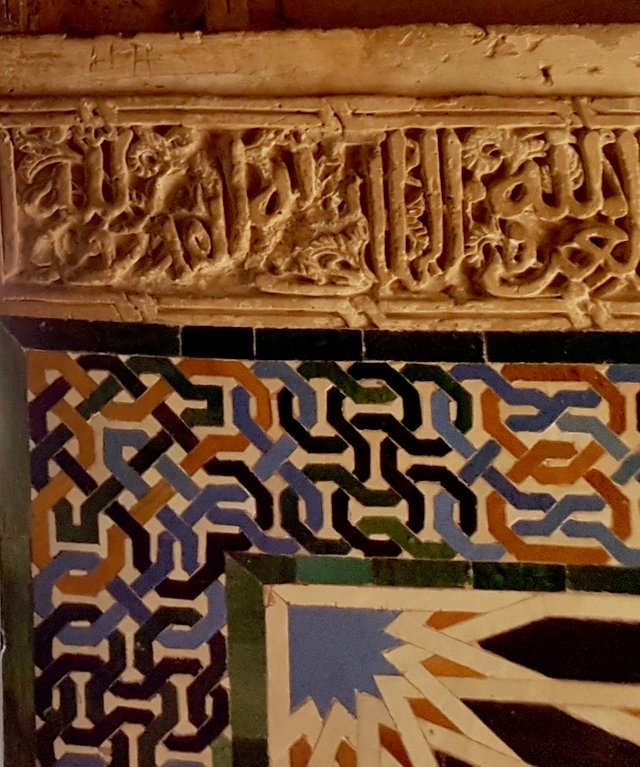

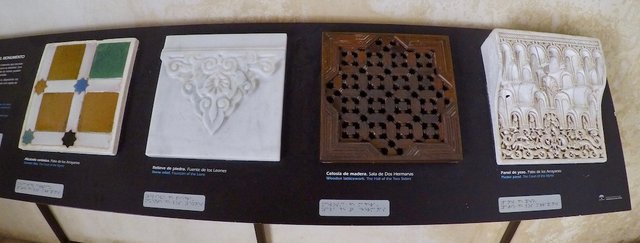
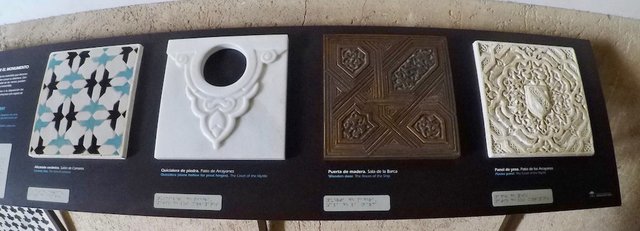
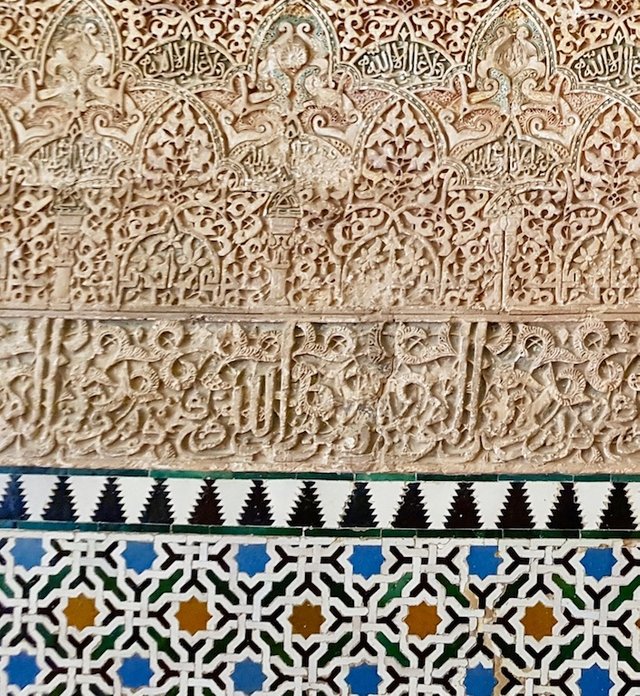
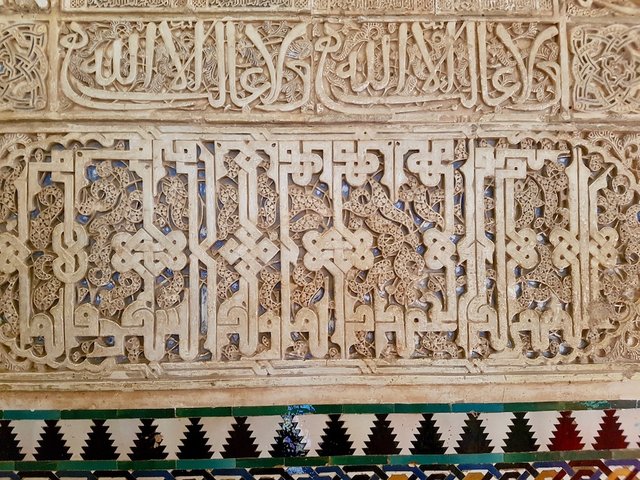


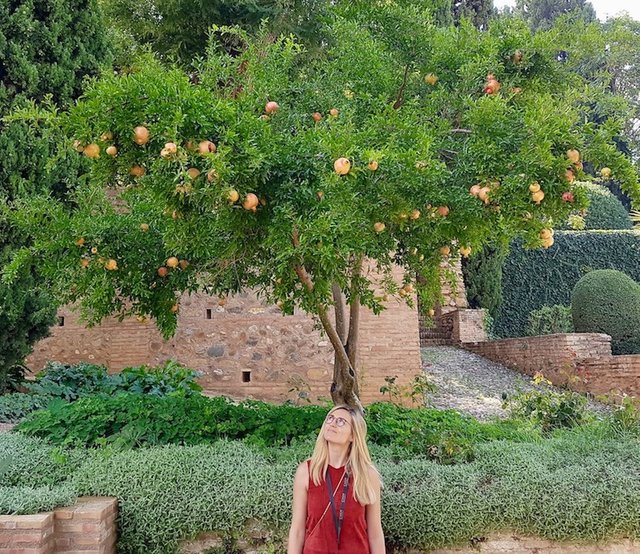


I have been nine years ago to Granada thanks for reminding me how precious is this residence and its magnificient mixture of techniques and architecture and culture. I remember at that time it required to book the ticket in advance on the website.
Yes, it is a unique place to visit, it is my second time, normally I would not be interested in the Islamic art only but in this case, it's like the whole city is bathed in the splendour of the past times and mixed cultures that makes it so unusual for a tourist. Thanks for dropping by ;)
You're right for such splendour and atmosphere it is my favorite city I have visited in whole Spain. Plus I love Tapas in Granada in my opinion the best and cheapest in the country
This post has been voted on by the SteemSTEM curation team and voting trail in collaboration with @utopian-io and @curie.
If you appreciate the work we are doing then consider voting all three projects for witness by selecting stem.witness, utopian-io and curie!
For additional information please join us on the SteemSTEM discord and to get to know the rest of the community!
Thank You ;*
I always enjoy your history posts. I've never read the history of the Alhambra before now. Thanks for sharing.
I think I'm going to show this to my mum to enjoy too. She's a historian by the way.
Nice one Highonthehog
I was there just now, so happy to come back after few years. Was actually looking for some inspiration after the Venezuelan flood that I have served for past few months ;) I'm glad that people like my posts and don't mind my crappy English, I'm reading it from time to time and still find so many mistakes ;P hope your mom will like it, I remember she is a Historian, big hugs from Munich.